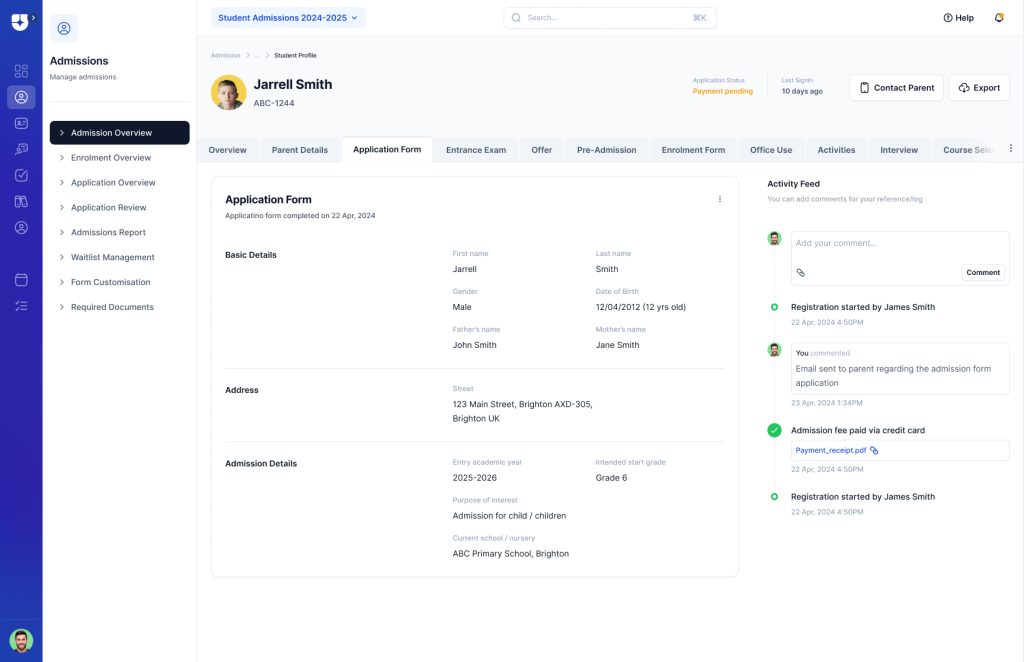
Introduction
In a world increasingly driven by digital technologies, data privacy best practices for schools are not just regulatory checkboxes—they are a crucial part of school leadership. As guardians of some of the most sensitive personal data—student records, medical details, and safeguarding notes—school administrators must ensure that this information is collected, stored, and shared with the highest level of care and accountability.
This comprehensive guide offers strategic, actionable and research-backed recommendations tailored for school leaders. These practices not only ensure compliance with the UK GDPR and Data Protection Act 2018, but also help foster transparency, trust, and resilience in your school’s digital ecosystem.
Why Data Privacy Matters in Schools

Every day, schools handle vast amounts of personally identifiable information (PII). A breach—whether from a phishing email or a misconfigured database—can severely affect students, staff, and the school’s reputation. The Information Commissioner’s Office (ICO) reports that education consistently ranks among the top sectors for data breaches.
Yet, many of these incidents stem not from malicious hackers, but from poor internal practices—improper data sharing, unsecured records, or unaware staff. Strengthening your school’s approach begins with embedding privacy into your culture.
1. Understand and Comply with Legal Requirements
To begin with, it’s imperative that school leaders understand their legal obligations. Under the UK’s GDPR framework, all schools must:
• Clearly identify a Data Protection Officer (DPO) who monitors compliance
• Maintain a regularly updated data processing register
• Perform Data Protection Impact Assessments (DPIAs) when implementing new systems
• Ensure staff undergo mandatory training on privacy awareness
For guidance tailored to education, refer to this GDPR guide for schools by Jisc, which provides actionable advice aligned with legal frameworks. Being legally compliant not only mitigates fines and liabilities but also sets a culture of accountability across all levels of staff.
2. Minimise Data Collection and Retention
One of the cornerstones of data privacy best practices is data minimisation—only collecting and retaining information that is essential to your educational objectives. This principle is especially critical when considering student data privacy and data protection in schools, where excessive or unnecessary data collection can increase the risk of misuse or breaches.
For instance:
• Avoid collecting personal details that aren’t strictly necessary for enrolment or safeguarding.
• Implement a data retention policy that defines how long student records are kept and when they are securely deleted.
The Department for Education’s guidelines recommend setting retention schedules for different data types. By regularly auditing your databases, you can eliminate outdated records and reduce exposure in the event of a breach.
3. Secure Both Digital and Physical Records
Protecting data means thinking beyond just IT systems. In the context of data privacy in schools, security must be applied to both digital platforms and physical documentation. Implementing comprehensive security solutions for schools—from secure servers and encrypted emails to locked filing cabinets and controlled access to records—is essential to safeguarding sensitive information.
Key measures include:
• Encrypting all sensitive files and ensuring that email attachments are password-protected.
• Enforcing strong password policies and enabling multi-factor authentication (MFA) across devices and systems.
• Storing printed student records or safeguarding logs in locked cabinets with access restricted to authorised staff.
A study published in the British Journal of Educational Technology reinforces that layered protection—physical, network-level, and human-centric—is critical in preventing school data breaches.
4. Train Every Member of Staff on Data Privacy
A school’s digital security is only as strong as the awareness level of its staff. Training is not a one-time event, but an ongoing investment in digital resilience.
All staff—including temporary staff and contractors—should be trained to:
• Recognise and report phishing or suspicious emails
• Understand the risks of using unsecured Wi-Fi and personal devices
• Know their responsibilities in reporting suspected data breaches
The National Cyber Security Centre offers free cybersecurity training materials designed specifically for the school environment. Using these as part of your INSET or CPD programmes can significantly reduce vulnerabilities.
5. Obtain and Manage Parental Consent Transparently
School administrators must obtain informed, explicit consent for data uses not covered under legal obligations—such as publishing photos, using student data in research, or integrating third-party educational apps.
Effective consent practice includes:
• Using simple, jargon-free consent forms with opt-in tick boxes
• Making it easy for parents to withdraw consent at any time
• Logging and timestamping all consent decisions for auditability
6. Prepare a Proactive Data Breach Response Plan
Even with strong protections, breaches can happen. What matters is how swiftly and transparently your school responds.
A best-in-class breach response plan should:
• Include a clear escalation procedure to notify your DPO and leadership
• Identify whether the breach meets the threshold for reporting to the ICO within 72 hours
• Include templates for notifying affected individuals, including students and parents
The UK Safer Internet Centre offers excellent real-life examples and communication templates to help you navigate these sensitive situations.
7. Vet and Monitor All Third-Party Vendors
From MIS platforms to learning apps, schools increasingly rely on third-party vendors. However, these partnerships also introduce risk. It’s essential to scrutinise and monitor your suppliers thoroughly.
Ensure that vendors:
• Have robust data privacy policies and comply with UK GDPR
• Agree to Data Protection Agreements (DPAs) that define how student data is stored, shared, and deleted
• Are subject to annual risk assessments
A 2023 study in Computers & Security found that over 60% of data incidents in schools involved third-party applications with unclear privacy terms. Don’t hesitate to ask vendors for proof of encryption, access controls, and certifications like ISO 27001.
Creating a Culture of Data Privacy in Your School
Adopting these seven data privacy best practices isn’t simply about avoiding fines—it’s about building a school environment rooted in trust, responsibility, and respect.
Encourage transparency by:
• Publishing a publicly accessible privacy policy on your website
• Holding information sessions for parents to explain how their children’s data is used
• Empowering students to understand and exercise their digital rights
Conclusion

Implementing data privacy best practices is not just about ticking boxes-it’s about protecting your students, your staff, and your school’s reputation. By following these seven powerful steps, school administrators can confidently navigate the complex landscape of data protection and set a shining example for the entire educational community.
FAQs
1. What are the most common data privacy risks in schools?
The most common risks include unauthorised access to student records, phishing attacks, unsecured devices, and improper sharing of information with third parties.
2. How can school administrators ensure staff follow data privacy best practices?
Regular training, clear policies, and ongoing communication are key. Use audits and spot checks to reinforce compliance.
3. What should a school do if there is a data breach?
Contain the breach, inform affected individuals and the ICO within 72 hours, and review procedures to prevent future incidents.
4. Are cloud-based school management systems safe for student data protection?
They can be, provided the vendor adheres to strict data security standards and data protection laws. Always review contracts and conduct risk assessments.
5. How often should data privacy policies be reviewed?
At least annually, or whenever there are changes in law, technology, or school processes.

